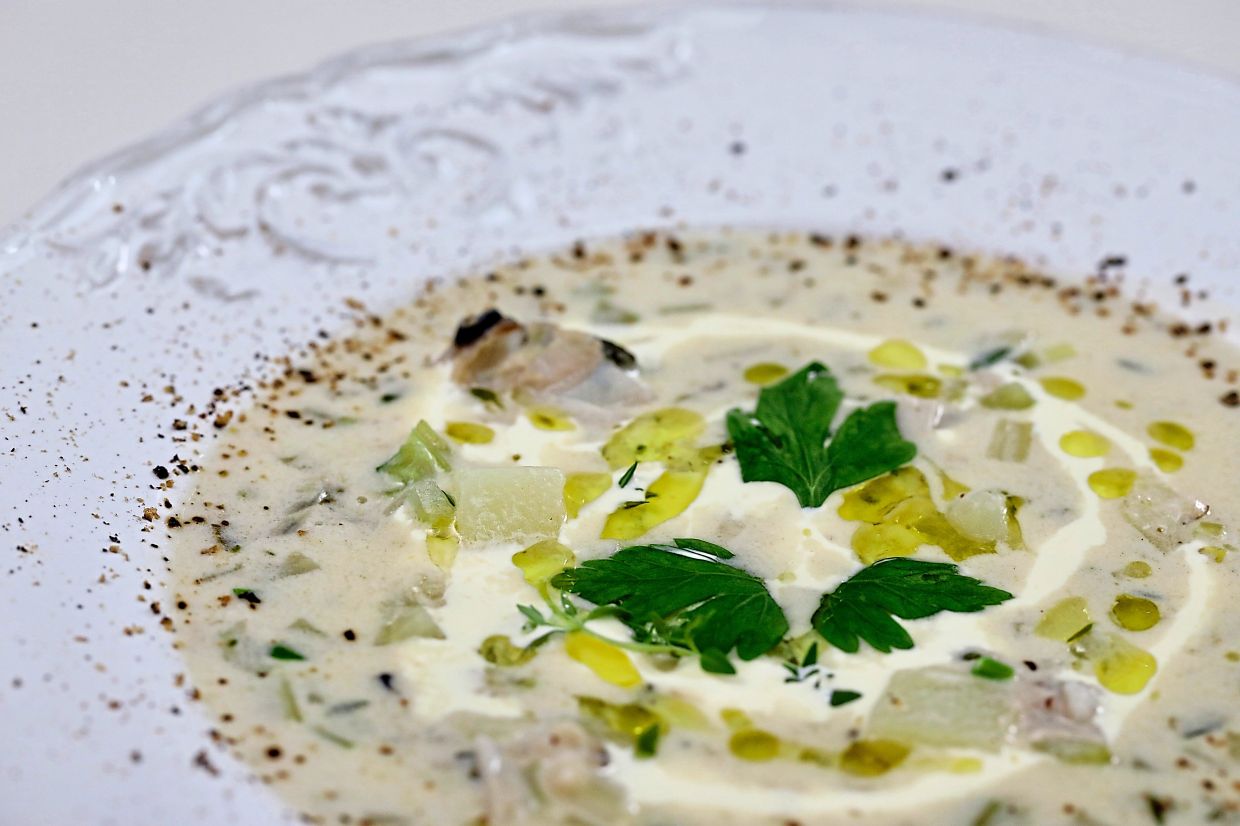IN the American culinary landscape, few dishes evoke the essence of a region as vividly as New England clam chowder. This iconic soup, hailing from the picturesque coastal towns of the northeast, was created when European settlers made their home along the rugged coastline of New England. By the 19th century, clam chowder had cemented its place in New England’s culinary repertoire, with the first recorded recipe appearing in Boston Evening Post in 1751.
The chowder’s distinctive creamy base sets it apart from other variations. Unlike the tomato-based Manhattan version, New England clam chowder boasts a rich, velvety broth made from milk or cream. This is my preferred version because the dairy component not only gives the chowder its characteristic white hue but also adds a layer of indulgent smoothness.

Shellfish used in the US for the chowder are the cherrystone or quahog varieties, which are very similar to Pacific clams here locally called thick-shell lala. Chowder can be made with thick-shell lala. Preparing the clams is quite an easy task if you get them fresh in the morning.
You will need to soak them in cold water with about a cup of salt for about two hours to help them purge sand from their gills. Do not store them in the refrigerator or in unsalted water, they will die. Because clams are innately salty, you must taste the dish at every step of the cooking process and adjust the salt level accordingly.
The original recipe for clam chowder calls for bacon, but in .























